Barmera Attractions
Lake Bonney
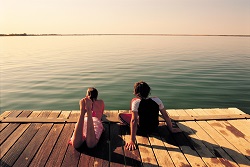
One of South Australia's most popular aquatic playgrounds, freshwater Lake Bonney is the perfect place to spend a day doing almost anything you please. Whether you're a swimmer or boater, Lake Bonney is for you. Canoeists and other boating enthusiasts enjoy great fishing and sightseeing as the lake and adjoining wetlands abound with wildlife. The lake is also popular with water skiers, windsurfers and jet skiers and you'll find excellent safe swimming areas to relax away the hours.
Barmera Theatre Art & Craft Gallery
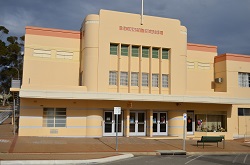
This gallery is a community-based venue for local art and crafts. It features oil paintings, watercolours, pastels and photography. Sculptures, china painting, pottery and other crafts are also displayed. Facebook:https://m.facebook.com/people/Barmera-Theatre-gallery/100063533382583/
Email: barmeratheatregallery1@gmail.com
| Address: | Barwell Avenue |
| Cost: | Free |
| Opening Hours: | Monday CLOSED Tuesday 10:00 - 14:00 Wednesday 10:00 - 14:00 Thursday 10:00 - 14:00 Friday 10:00 - 14:00 Saturday 09:30 - 11:30 Sunday CLOSED |
Napper's Ruins
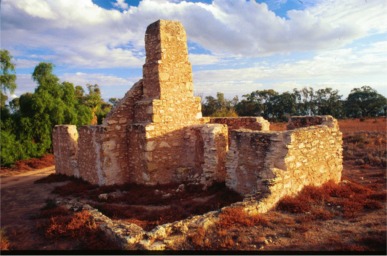
William Napper and William Parnell originally built this hotel in 1859. It was originally called the Lake Bonney Hotel and was on an old stock route at the northern end of Lake Bonney. It is now nothing more than ruins. During its heyday the house/hotel was a vital place for supplies and Napper irrigated his land thus probably becoming the first person to grow crops by irrigation along the Murray River.
| Address: | Queen Elizabeth Drive (on the north side of Lake Bonney) |
| Contact: | Barmera Visitor Information Centre |
| Phone: | 08 8588 2289 |
| Email: | vic@barmeratourism.com.au |
| Cost: | Free entry |
| Opening Hours: | Open 24 hours |
The Donald Campbell Obelisk
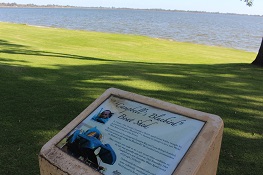
This Obelisk records the fact that the famous English speedster, Donald Campbell, back in 1964 attempted to break the world water speed record on Lake Bonney (he was unsuccessful). He reached 347.5 km/h but the lake was too small and the waves created by the speeding vehicle were too dangerous. It is next door to the Bluebird Café, a café that was named after Donald Campbell's boat.
| Address: | Queen Elizabeth Drive |
| Contact: | Barmera Visitor Information Centre |
| Phone: | 08 8588 2289 |
| Email: | |
| Cost: | Free entry |
| Opening Hours: | Open 24 hours |
Clock Tower
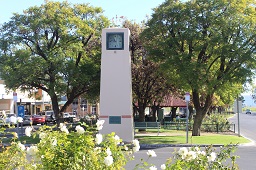
This was built in 1944 as a memorial to Charles Sturt who camped near Lake Bonney in 1844, during his search for the inland sea. The Berri Barmera Council had chimes similar to Big Ben placed in it, and they chime on the hour and half hour.
| Address: | Barwell Avenue |
| Contact: | Barmera Visitor Information Centre |
| Phone: | 08 8588 2289 |
| Email: | vic@barmeratourism.com.au |
| Cost: | Free entry |
| Opening Hours: | Open 24 hours |
War Gun Trophy
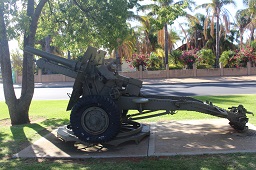
This is a Quick Firing 25 Pounder and was the standard Field gun used in the Australian Army from 1940-1967. The President of the Barmera RSL handed it over to the Chairman of the Barmera War Memorial Community Centre in 1962 and it was put on display in the main street of Barmera.
| Address: | Barwell Avenue |
| Contact: | Barmera Visitor Information Centre |
| Phone: | 08 8588 2289 |
| Email: | vic@barmeratourism.com.au |
| Cost: | Free entry |
| Opening Hours: | Open 24 hours |
Memorial Gates
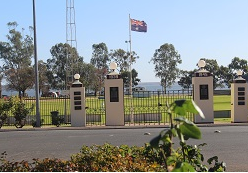
The gates are dedicated to local service personnel who paid the supreme sacrifice during the war. A wreath laying service is held here every Remembrance Day.
| Address: | Barwell Avenue |
| Contact: | Barmera Visitor Information Centre |
| Phone: | 08 8588 2289 |
| Email: | vic@barmeratourism.com.au |
| Cost: | Free entry |
| Opening Hours: | Open 24 hours |
Hawdon & Bonney Obelisk

This was erected to commemorate the overland journey of Hawdon & Bonney in 1838. They were the first pioneers to drive stock from the eastern states to South Australia. They camped on the shores of Lake Bonney, which Hawdon named after his companion. A plaque was later added by the McDouall Stuart Society to honour the explorer John McDouall Stuart. He and his party were the first people to cross the continent from south to north and back again.
| Address: | Lakeside Drive |
| Contact: | Barmera Visitor Information Centre |
| Phone: | 08 8588 2289 |
| Email: | vic@barmeratourism.com.au |
| Cost: | Free entry |
| Opening Hours: | Open 24 hours |
Horse Trough
This was built in 1930 to commemorate the working horses of World War 1. It was rededicated by the school children of the area in 2000.
| Address: | Barwell Avenue |
| Contact: | Barmera Visitor Information Centre |
| Phone: | 08 8588 2289 |
| Fax: | 08 8588 2777 |
| Email: | |
| Cost: | Free entry |
| Opening Hours: | Open 24 hours |
Loch Luna Game Reserve
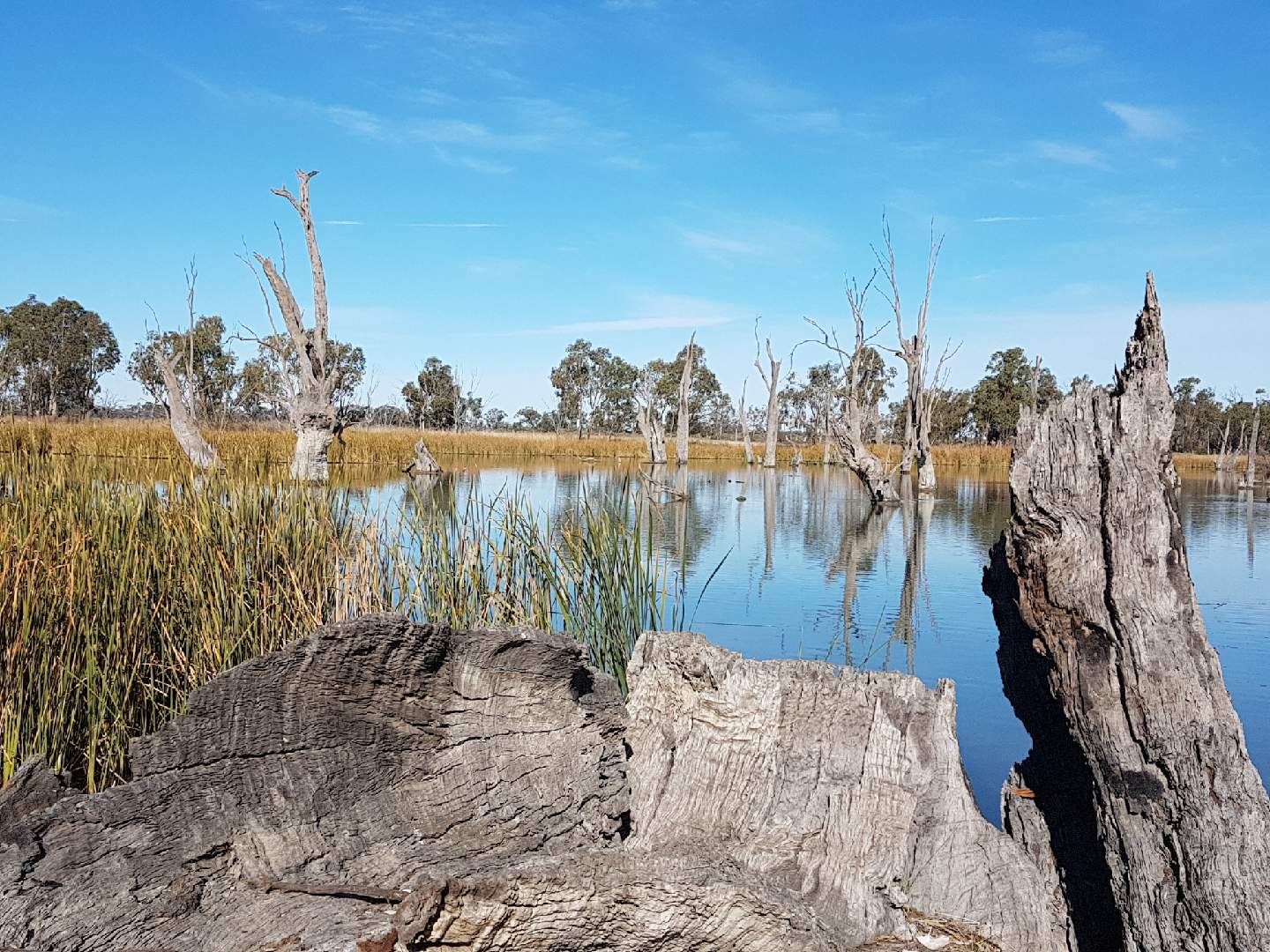
Loch Luna Game Reserve comprises a range of water bodies including narrow creeks and shallow swamps. It is a popular area for people who enjoy fishing, boating or just enjoying the river. Keep your eyes open for the Royal and the Yellow-billed Spoonbills. Listen out for the harsh call of the Darter as it regularly breeds in Loch Luna. Sea Eagles, Regent Parrots, Pelicans, White-faced herons and many other birds inhabit the reserves. Kangaroos graze beside the creeks, and, if you are quiet, you might be able to spot a water rat swimming along the edge of the reed beds. There is a range of activities available to the visitor including; Canoeing - Popular in Nockburra and Chambers Creek; Bird watching - waterbirds and dry land species; Boat launching - off park access. Cobdogla and Kingston on Murray ramp; Nature walk - Kaliwira Walk, Moorook, a 45 minute flood plain exploration; Waterfowl hunting - is permitted in restricted areas on open days only. Note: non toxic shot only.
Activities: River/creek studies, Bushwalking, Native flora and fauna, Birdwatching, Canoeing, Geocaching,
Further Information
| Address: | Just west of Barmera |
| Contact: | Department Environment, Water and Natural Resources |
| Phone: | 08 8595 2111 |
| Cost: | Camping fees: |
| Opening Hours: | Open 24 hours |
Bluebird K7
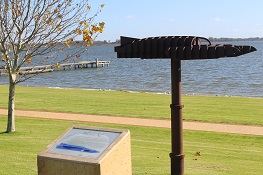
Bluebird K7 is a jet engined hydroplane with which Britain's Donald Campbell set seven world water speed records between 1955 and 1967. In November 1964, Donald Campbell accompanied by a support crew and media representatives, landed in Barmera to attempt a world water speed record on Lake Bonney. From this, Barmera gained a degree of world exposure, when Donald Campbell arrived with the jet powered hydroplane 'Bluebird' . Donald Campbell had broken the land speed record on Lake Eyre on 17 July 1964, 403.10m/h (648.73 km/h) in Bluebird.
Several spectacular runs were made (usually in the early morning), but the lake failed to produce the required glass-like surface. However, on November 23rd 1964 Campbell established an Australian water speed record of 216MPH.
You can find more information about Bluebird K7 in Rocky’s Hall of Fame and Pioneer Museum and a plaque and K7 Sculpture on Lake Bonney foreshore, plus the K7 Bluebird Project Facebook site - https://www.facebook.com/k7projectbluebird/
Opening Hours
| Monday | 08:30AM - 12:00PM |
| Tuesday | Closed |
| Wednesday | 08:30AM - 12:00PM |
| Thursday | 08:30AM - 12:00PM |
| Friday | 08:30AM - 12:00PM |
| Saturday | Closed |
| Sunday | Closed |
Open at other times by Appointment |
Ruby Hunter
Totem - Pelican / NO:RI
31st October 1955 – 17th February 2010
RUBY HUNTER was an acclaimed songwriter and performer who through her music campaigned for the rights of Aboriginal women and children. A nurturing soul, she rose above the tragedy of being a member of the Stolen Generations to give a voice to the vulnerable and offer strength to those in need.
A proud Ngarrindjeri / Erawirung woman Ruby was born in 1955 on a billabong situated near the banks of the Murray River at Renmark. Ruby was the last traditional baby born on an island and when she was born her grandfather rubbed her with warm ashes and lifted her up to the moon.
Ruby was eight years old when her four siblings and herself were taken from their family. Ruby remembered that the Government Authorities simply arrived one day in a big car, promising their grandmother that they were taking the children to the circus. At the time they were living with their grandmother on the Coorong at Meningie.
Sadly, Ruby was soon separated from her sister and brothers and was taken to the Seaforth Children’s Girls Home in Adelaide. At the age of 16 Ruby was released to make her own way in the world and with no idea of where to go she made her way onto the streets of Adelaide.
While homeless Ruby met Archie Roach, also a member of the Stolen Generations, who had drifted to Adelaide from Mildura across the Victorian border. They met at a Salvation Army drop in centre as they were both living on the street. Forming a unique friendship during their time together on the streets of Adelaide, they formed an enduring bond that would last for the rest of Ruby’s life.
Ruby nurtured and encouraged Archie as he began to translate his experience of despair and homelessness into music that would eventually resonate across the nation and the world. Ruby also drew on her childhood experience in caring for vulnerable children and young people as well as in her own music.
Ruby and Archie moved back to Victoria where Ruby acquired a job at the Marg Tucker Hostel for Girls which provided accommodation for homeless Aboriginal girls and women.
Ruby and Archie together cared for 14 children in a family house group home run by the Victorian Aboriginal Child Care Agency. Later they made their own home a welcoming haven for homeless and disadvantaged young people.
Ruby was also a strong advocate against domestic violence, and a voice for the stolen generations, and between them Ruby and Archie raised many foster children with their own two boys. Ruby was a remarkable woman who touched many lives, not just those of her own people.
Ruby became the first Aboriginal woman to be signed to a major record label and in 1994 released her first album ‘Thoughts Within’ and then in 2000 released her second album ‘Feeling Good’ earning her ‘Best Female Performer of the Year’ followed by a presentation of the ‘Deadly Awards’ in 2000.
Ruby was also a member of the Black Arm Band. It was her dream to encourage Indigenous Australians to perform on the big stage, and for the next generation to access sponsorship, classes and workshops to enable them to build a career in the entertainment industry.
Ruby passed away in February 2010 leaving a legacy that endured in her music, her beloved family and the countless others whose potential she recognised and encouraged. She is buried alongside her sister and brothers in Gerard Cemetery.

Archie Roach
TOTEM Eagle / Wuldi / Bunjil
Born 8th January 1956
The music of singer-songwriter Archie Roach AM has given voice to the pain, hope and pride of a generation and earned him a place among the most treasured musicians this country has produced.
A proud Maar Nation and Bundjalung man, Archie was born in Mooroopna, Victoria on the 8th January 1956. Archie's family lived on the Framlingham Aboriginal Mission near Warrnambool in southwest Victoria. He is one of the Stolen Generations, forcibly taken as a two year old from his mother, Nellie, a Kirrae Whurrung woman, and father, Archie, a Bundjalung man from New South Wales.
Archie passed through several foster homes before being settled with the Cox family, who he acknowledges as having looked after him well. He learned the basics of keyboard and guitar from his foster-sister, Mary Cox. Too young to understand his situation, he was told his biological parents had died.
The truth about his forced removal from his family was discovered when he was a teenager, in a letter from a sister he didn't know he had. It brought news of the recent death of his mother, Nellie. The revelation triggered an identity crisis that manifested itself in over a decade of alcoholism and periods of homelessness.
While living on the streets in Adelaide, Archie met Ruby Hunter, a Ngarrindjeri / Erawirung woman from South Australia. He credits her as his saviour. Ruby was also of the Stolen Generations and a talented musician. The two became soul mates and embarked on a journey of healing through music. Years later, when they were married with a family of their own, their house would remain open to disadvantaged young people in need of the support they themselves had found in each other.
Archie caught the attention of musician Paul Kelly and his Messengers' band mate, Steve Connolly, in 1989, with his song, ‘Took the Children Away’. Its plaintive account of the removal of Aboriginal children from their families resonated across Australia and internationally. Many identified closely with Archie's searing lyrics; many more could not help but be moved by them.
In 1990, Archie released his debut album, Charcoal Lane. Kelly and Connolly were producers. The album took its title from a laneway in Fitzroy — the heartland of Melbourne's Aboriginal community — where Archie had, in more troubled times, idled away the hours drinking. Charcoal Lane won two ARIA awards, a place among the US Rolling Stone's top albums of 1992, and a Human Rights Achievement Award for ‘Took The Children Away’. It was the first time the award had been presented to a songwriter.
Archie’s career as a recording artist spans ten albums, numerous soundtracks and a number of compilations of his work. He was inducted into the ARIA hall of fame in 2020 and made a Member of The Order Of Australia in 2015 for his lifetime contributions to music and activism. Beyond these honours, Archie's music has won countless awards including seven ARIAs. His breakthrough debut album Charcoal Lane (1990) maintains a lasting resonance today.
The album’s iconic song “Took The Children Away” was the first song to win an Australian Human Rights Award and has been added to the National Film & Sound Archive.
Archie’s autobiography Tell Me Why, (2020) introduced him as an author. The award winning memoir details Archie’s extraordinary odyssey as a stolen child, removed from his family at the age of two, whose journey to reconnect with his people and understand his identity shaped the artist, activist and leader we know today. Archie’s activism, always a companion to his creative career, continues through The Archie Roach Foundation, dedicated to nurturing meaningful opportunities for First Nation artists.
Throughout it all, Ruby remained a constant in Archie's life until her sudden death in 2010. They often collaborated, and Ruby received her own acclaim when she became the first Aboriginal woman to sign a major recording deal. They regularly toured together, everywhere from Europe and the US, to the remotest regions of outback Australia. More recently, they were among the founding members of the Black Arm Band, while Ruby's beautiful illustrations featured in a children's lyric book of Archie's iconic song, ‘Took The Children Away’.
In prose and song, Archie has made telling the stories of his people, of this land and of the human condition his life’s work. His voice, uniquely Australian yet unquestionably universal resonates with audiences everywhere. Archie now lives southwest Victoria close to the Framlingham Aboriginal mission where he was taken from his family all those years ago.



